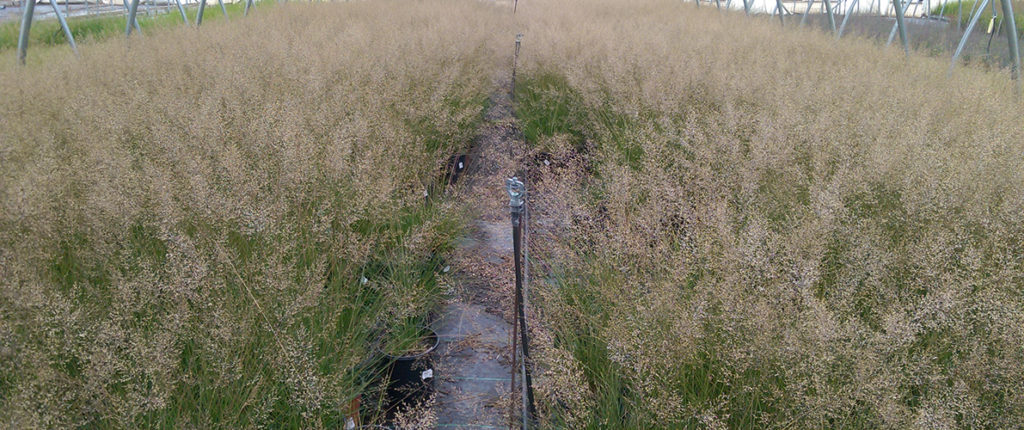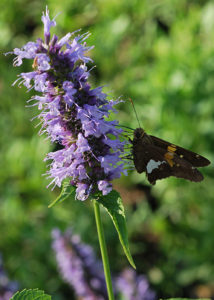
As mentioned several times, we live out here is isolation from most of civilization, here in rural Michigan surrounded by vineyards and soybean fields and the occasional woodlot. That, and nobody tells us anything. So I have been attending every possible garden or arboretum or nursery meeting talk while doing market research on what or which plants to grow. For us to grow them we need to, first of all, acquire some stock plants, make more little plants, get them lined out in the field, figure out how to propagate them—whether by division, stem cuttings, root cuttings, or Dutch cuttings. Then we are ready to produce things efficiently and reliably.
I have been told that Roy Diblik is an influential person in the landscaping design business. I attend all of his talks and stay awake most of the time. His landscape design seems to consist of planting lots of arching plants such as Sporobolus and Carex to shade out future weeds and then to randomly stick in the occasional achillea or agastache for color and the odd calamintha for fuzzy whiteness and texture. I have no comments about aesthetics, having no taste, but I want to grow what sells.
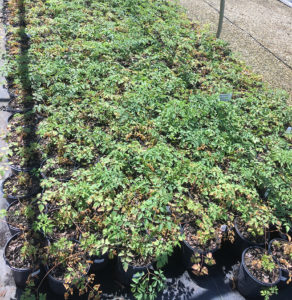
That is why we acquired a few days ago 1,500 little plants just coming out of tissue culture but with roots on them of Aruncus ‘Horatio’. This is a goatsbeard that Earnst Pagels hybridized from A. aesthusifolius and A. dioicus, one each from the new world and the old world. Roy says that this plant is essential in every landscape. It was not clear if each landscape needed several or only one. I saw one of these up at the Boerner Botanical Gardens near Milwaukee and I think that it is essential for every garden because it makes all of the other plants look so good. Anyhow, in a year or so we will have 1,500 of these for sale and I will be writing glowing reports on the beauty of this fine plant. The blogs may be a little further apart by then because I may be spending more time in therapy so that I can sleep at night.
Now that I have decided to have available in our fields as many of the latest and newest of these meadow or pasture or faux-prairie-type of plants, we are busy accumulating them so that we will be able to go into mass-production on short notice. Let us know if there are any that you would like someone to have a field full of, just in case.
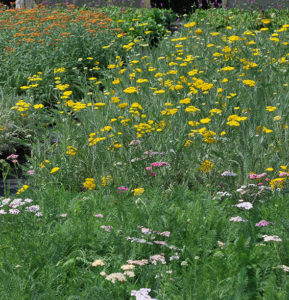
In keeping with our new resolve, which is to make money rather than to bare our souls, here is some information on our recent production. We have just potted up 90,000 liners and plugs of Sporobolus h. ‘Tara’. There is a trick to successfully propagating this fine plant and we have it figured out. Because this is a selection, it is all done vegetatively and not from seed. In a month and a half we will do another big batch of ‘Tara’ as I have it in a field where it needs to be moved from. Some years ago I sent out a newsletter with information on ‘Tara’ production and the response was quick and immediate. A customer immediately ordered some 2 gallon ‘Tara’ for delivery in three months. Maybe you can avoid getting your hopes up, this is a slow growing plant. Try to not order some large pots for immediate sales, although I think that we have a good supply from last year’s production cycle.
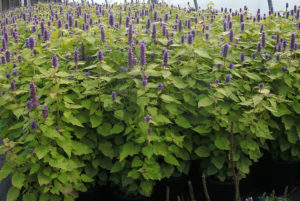
Our new business model is to make more money. This may not be a novel concept to most nursery people, but it is a recent epiphany to me that this should be a primary goal. And then there was a sub-epiphany, which is that liners sold for more money than plants that were commodities while they cost the same to produce. The problem with these new revelations is that instead of being happy and cheerful about figuring out how the world works, I am sad and distraught upon realizing that I have wasted so much of my life working on the wrong business model. It is tough to be in a position where the better the ideas, the worse I feel. So, we hope to sell these ‘Tara’ plants with the problem being that we forgot how fast (or slowly) they grew last year and so we cannot predict when they will be of good enough quality to market as liners. What is interesting about Sporobolus is how much roots—maybe that should be how many roots or how much root mass, anyhow—these plants produce compared to the top growth which is modest and slow. Out in the Great American Prairie it must be tough going and so a survivor needed to go deep fast in order to find food and water.
Speaking of liners that we want to sell at a premium, there are about half a million of recently potted up plugs of various sizes of Carex pensylvanica. This is a modest little sedge plant that looks like a clump of green grass to normal people. A few years ago it was the latest hot thing and I did not inquire closely as to why it had such popularity. Maybe the fact that it grows in the shade and does not have to be mowed and that it looks like grass, is the answer. Rob Diblik tells me that he is promoting many varieties of Carex (sedges to the rest of us) as a substitute for pachysandra in the future. Because our main product is pachysandra we are desperately building up stock of some twenty varieties of sedges just in case a lot of people listen to Roy.
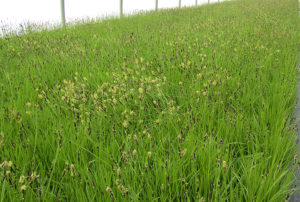
The alert follower of this blog may have noticed that we have occasionally inserted color illustrations to go with the writing on the assumption that the writing will not stand on its own, whatever. One of the recent photos was of a plug of C. pensylvanica with a few roots showing. The photo was proudly labelled: “Carex pen. with roots.” Technically, that was a correct label for a proper photo. It showed how proud we were that we had had a successful propagation season this past winter. There may have been some ambiguity in that the customer might have perceived that this was the quality of product that they were going to get when ordering this plant. Upon first viewing the photo in question, I clutched my heart and staggered around some—illustrating a point to the social media person—and then suggested that the photo be taken off and replaced with a tree or birds or clouds or anything rather than give the wrong impression.
And so we have many adventures here in the nursery business. Aside from these we are picking up plants and loading trucks and watching the weather and wondering if our banker will want to hear any excuses about nursery performance because of the weather. Our banker deals mostly with regular farmers and so I think the banker is used to hearing many and detailed weather stories and from far better people than I, people with much more experience making excuses about the weather when they talk to a banker.
